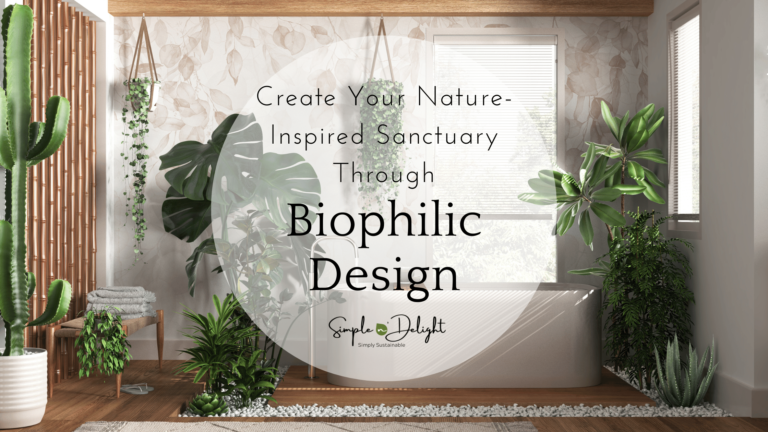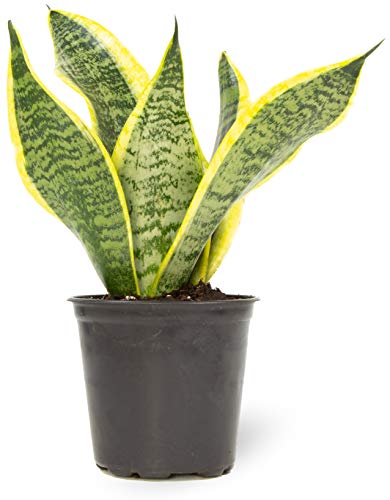Biophilic design?! What’s that?!
When I first encountered the term “biophilic design,” my initial thought was that it pertained to some aspect of biology. Little did I know, biophilic interior design has the power to transform your living spaces, forging a deep connection with nature. This connection, in turn, has a profoundly soothing effect on the mind and body.
Helena van Vliet, an expert in Biophilic Design, considers architecture a healthcare profession, since so much of our mental health is related to our immediate environment. As we look into the principles of biophilic design and how to integrate them into your space, you’ll start to appreciate the serenity and vibrancy that nature can introduce into your home and life.

This beginner-friendly guide is crafted to assist you in weaving natural elements into your living areas, fostering well-being, alleviating stress, and purifying the air— all while maintaining a conscious regard for the environment.
Here are some straightforward steps and product recommendations to initiate your path to a more sustainable and healthful dwelling.
(Some of the links in this article are affiliate links, meaning we may earn a small commission for suggesting them, we have done our best to suggest only the best quality out there. As an Amazon Associate, I earn from qualifying purchases with the links provided in this article. In no way does this affect our description or review of their products.)
Biophilic Design: A Pathway to Sustainability
Biophilic design not only reconnects us with the natural world but also champions sustainability through its core principles. By integrating nature into our living and working environments, biophilic design offers a holistic approach to eco-friendly living, enhancing both personal well-being and the health of our planet.
Biophilic Design aims to incorporate the following for a more sustainable and natural living space:

- Energy Efficiency: Utilizes natural light and ventilation to reduce reliance on artificial lighting and cooling systems, decreasing energy consumption.
- Sustainable Materials: Advocates for the use of natural, renewable materials like bamboo and wool, reducing environmental impact and indoor pollutants.
- Enhancing Biodiversity: Incorporates plant life, green walls, and rooftop gardens to support urban biodiversity and improve air quality.
- Water Conservation: Implements sustainable water practices such as rainwater harvesting and water-efficient landscaping to minimize water wastage.
Biophilic Interior Design: Start with Indoor Plants

Plants are the heart of biophilic design, bringing life, color, and freshness into any room. They’re not just decorative; they improve air quality and reduce stress levels. According to the American Lung Association, plants do clean the air in a closed indoor environment.
In order to choose the best plants for your home or office you first need to consider the amount of light and space available to you. Here are some of the best options I have found:
For Low Light: Consider a Snake Plant or ZZ Plant, both known for their resilience and low maintenance. They thrive even in the dimmest corners, purifying the air as they grow.
Small Spaces: Opt for Air Plants or Succulents. They take up minimal space and can be displayed in creative ways, such as in hanging terrariums or geometric planters.
Biophilic Interior Design: Natural Materials & Textures
Incorporate materials that evoke the natural world, bringing its calming and grounding effects indoors.
Biophilic Design: Rugs and Throws
Look for items made from organic cotton, jute, or bamboo. These materials add warmth and texture, creating a cozy, nature-inspired vibe.
Biophilic Design: Furniture
Consider pieces crafted from reclaimed wood or bamboo. They not only look beautiful but also tell a story of sustainability and care for the environment.
Biophilic Interior Design: Natural Lighting and Air Quality
Maximize natural light as much as possible. It’s essential for our circadian rhythms and overall mood.
- Window Treatments: Use light, airy curtains that allow sunlight to filter through while providing privacy.
For air quality, besides plants, consider a Himalayan Salt Lamp or a Beechwood Essential Oil Diffuser. Both add a soft, natural glow to the room and can improve the air quality.
Biophilic Interior Design: Create a Natural Sanctuary
Dedicate a space for relaxation and reflection, surrounded by elements that remind you of your favorite outdoor spaces.
Water Features: A small tabletop fountain can bring the soothing sounds of running water into your home, mimicking a serene stream.
- Nature Sounds and Scents: Use a sound machine with nature sounds and diffuse natural, plant-based essential oils to create an immersive sensory experience.
Biophilic Interior Design: Embrace Natural Decor
Finally, decorate with items that mirror the beauty of nature. Think stones, seashells, and wood.
- Decorative Elements: Place pebbles in a clear vase or display a collection of seashells on a reclaimed wood shelf for an instant connection to the natural world.
Transforming your home into a biophilic haven doesn’t require a complete overhaul. Simple, thoughtful changes can significantly impact your space’s look and feel, making it a healthier, more joyful place to live. By choosing sustainable, eco-friendly products, you’ll not only create a beautiful home but also contribute to the well-being of our planet.

Conclusion
Biophilic design offers a sustainable blueprint for the future, where our homes and workspaces not only connect us more deeply with nature but also contribute to the health of our planet.
By embracing principles that prioritize energy efficiency, sustainable materials, biodiversity, and water conservation, biophilic design not only creates spaces that are aesthetically pleasing and nurturing for the soul but also champions environmental stewardship.
As we continue to forge a path towards sustainability, biophilic design stands as a testament to the power of integrating nature into our built environment, promoting a world where human and ecological well-being are inextricably linked.



















2 Responses
Your passion for your subject matter shines through in every post. It’s clear that you genuinely care about sharing knowledge and making a positive impact on your readers. Kudos to you!
Your point of view caught my eye and was very interesting. Thanks. I have a question for you.